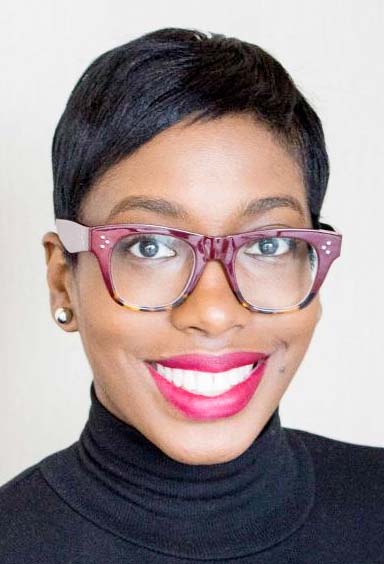What’s Visual Search? (And Why Smart Marketers Should Care)
August 28, 2019
 Google unveils its new search features including, activity card, smart video, and Google Lens at the Google Search 20th Anniversary Event on September 23, 2018 in San Francisco, California.
Google unveils its new search features including, activity card, smart video, and Google Lens at the Google Search 20th Anniversary Event on September 23, 2018 in San Francisco, California.
Ask “What’s visual search?” and the average shopper will likely respond with a puzzled look. But mention Google Lens, Amazon StyleSnap or Pinterest Lens — especially to young consumers — and the response is liable to be recognition and enthusiasm.
In the last six years, visual search market revenue has increased 29% year-over-year, according to Statista. It’s clearly a medium savvy marketers must pay attention to.
LaToya Christian, Managing Partner for GroupM’s Marketing Strategy & Analytics department, has been evangelizing about why companies must jump on the visual search bandwagon now. Named a 2019 Adweek Media All-Star, Christian spoke about the subject at the Culture Marketing Council’s annual summit this summer.
How would you explain visual search to an 8-year-old?
As part of the Alpha generation, an 8-year-old may be better inclined to explain visual search to me. But simply, I would tell an 8-year-old they can take a picture of something cool they like. With visual search they’ll instantly learn more information about it or, better yet, their parents can buy it really easily!
What age range is adopting visual search?
We currently see the greatest knowledge interest pertaining to visual search amongst 18- to 34-year-olds, who are 30% more likely to be users of this technology.
However, while 52% of adults have an interest in visual search, we can’t overlook that 50% of those 35-54 and 41% of those 55+ are interested in learning more and trying it out. These numbers indicate that there may be an opportunity for this technology to be embraced across age groups as it becomes more mainstream.
What’s driving the movement from text-based to visual search?
Visual search is adding to the overall search volume. Just like voice-enabled searches, it’s complementing and adding to pre-existing keyword searches. There will still be the need for text-related searches, however for those hard to articulate searches, visual will help to fill the gaps and make it easier for generating relevant results.
What will it take for older folks to make the switch?
Once consumers — especially those who may be a bit older — understand the relevant everyday use cases, that may make searching or purchasing more seamless. There will be no need to convince them. The benefits will be clear.
What companies are capitalizing well on visual search? Can you share best practices?
No surprise that big players like Amazon, Pinterest and Google are in this space. But there are also several smaller developers that are creating and fine-tuning their visual tech offerings which many of the better-known companies and platforms are using.
While most consumers are still unaware of this exact technology, it’s clear that they’d like to have the capabilities that visual search offers. Based on an e-Marketer report, over 50% of internet users stated that upon taking a picture, they’d like to be given similar product ideas. That’s visual search, though people may not know it yet.
With this insight, retailers specifically have an opportunity to continue to build capabilities in this space and work with developers whose technology may be best tailored towards their needs.
It’s reported that fast fashion brand Forever 21 partnered with Donde Search, a visual developer focused in the retail space, to test out the algorithm capabilities on their mobile app. After a month, the retailer saw a 20% increase in average purchase value and higher conversions. That’s a win for Forever 21!
Being in on the early stages has its challenges, especially when something goes wrong and disappoints a customer, but the Forever 21 example reinforces how getting those learnings and the behavioral analytics are essential. The company is now expanding visual search to its e-commerce website.
Is visual search important for multicultural marketers?
For all marketers, it’s important to understand that early adopters of technology are younger and therefore more diverse, especially when thinking of Gen Z and Millennials. Due to their desire to be trendsetters and their overall interest in innovation and technology, these audiences often make for the best test-and-learn groups.
Through custom research conducted at GroupM, we’ve found that diverse consumers are two times more likely to have conducted a visual search.
That behavior, layered with their likelihood (50% more likely than their non-Hispanic White peers) to communicate with brands online, makes them an ideal audience to gain useful insights from.
What advice can you share to help marketers and companies catch the visual search wave?
Get in the game now. While the adoption of visual search is still in its infancy phase, there’s an advantage to being ahead of the mainstream adoption curve. Curating image libraries, refining algorithms for better accuracy, and collecting data and insights based on consumers behavior will take time.
Plus, it’s estimated that brands that redesign their websites to support visual will increase digital commerce revenue by 30%.
Do you use visual search?
I personally have used the Asos app visual search tool for finding inspiration for my upcoming summer holiday. In the future, I’ll be excited to use visual search to assist with possible language translations on my next trip or to make grocery shopping less burdensome.
By Court Stroud. Check out my website.































